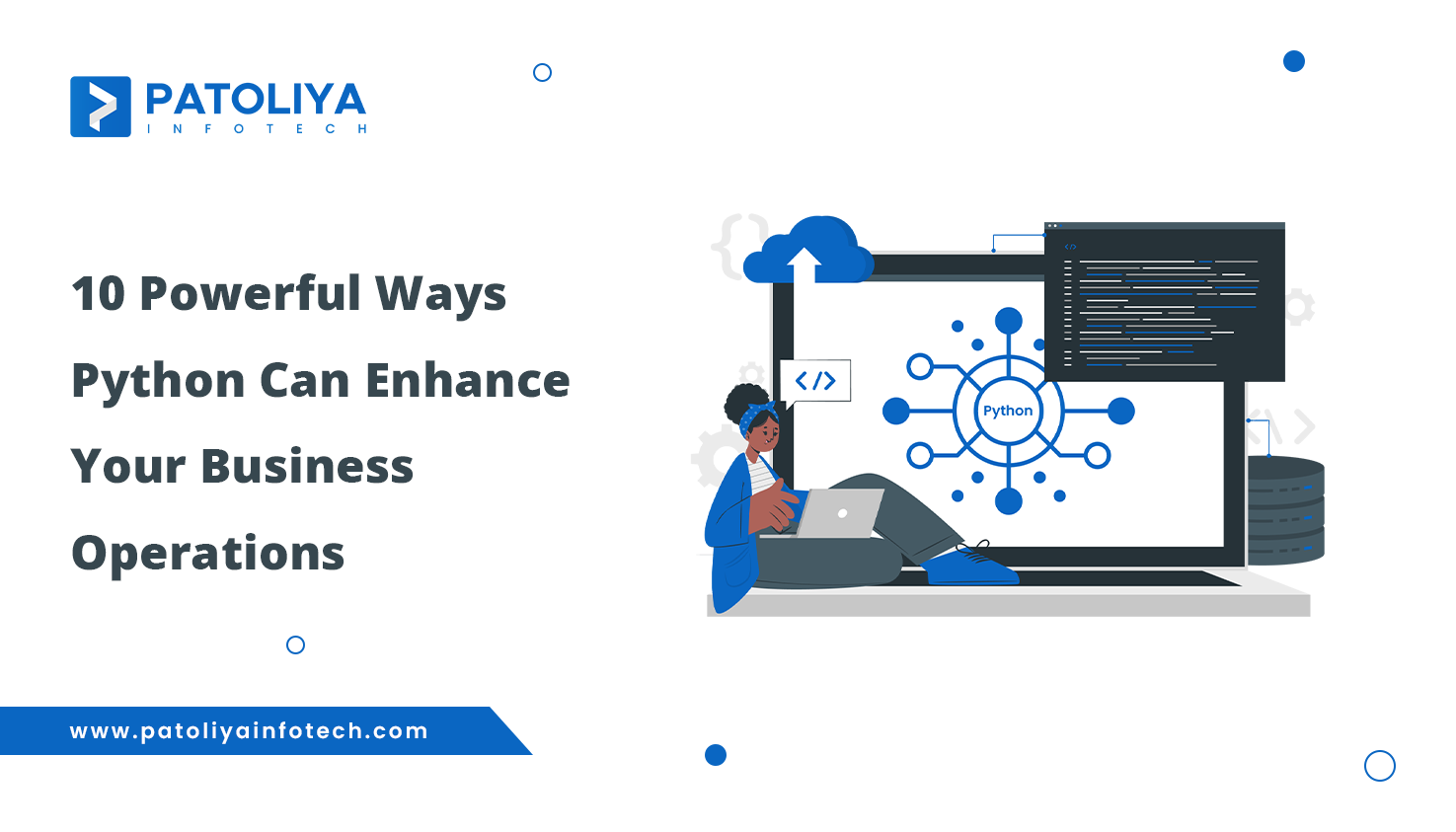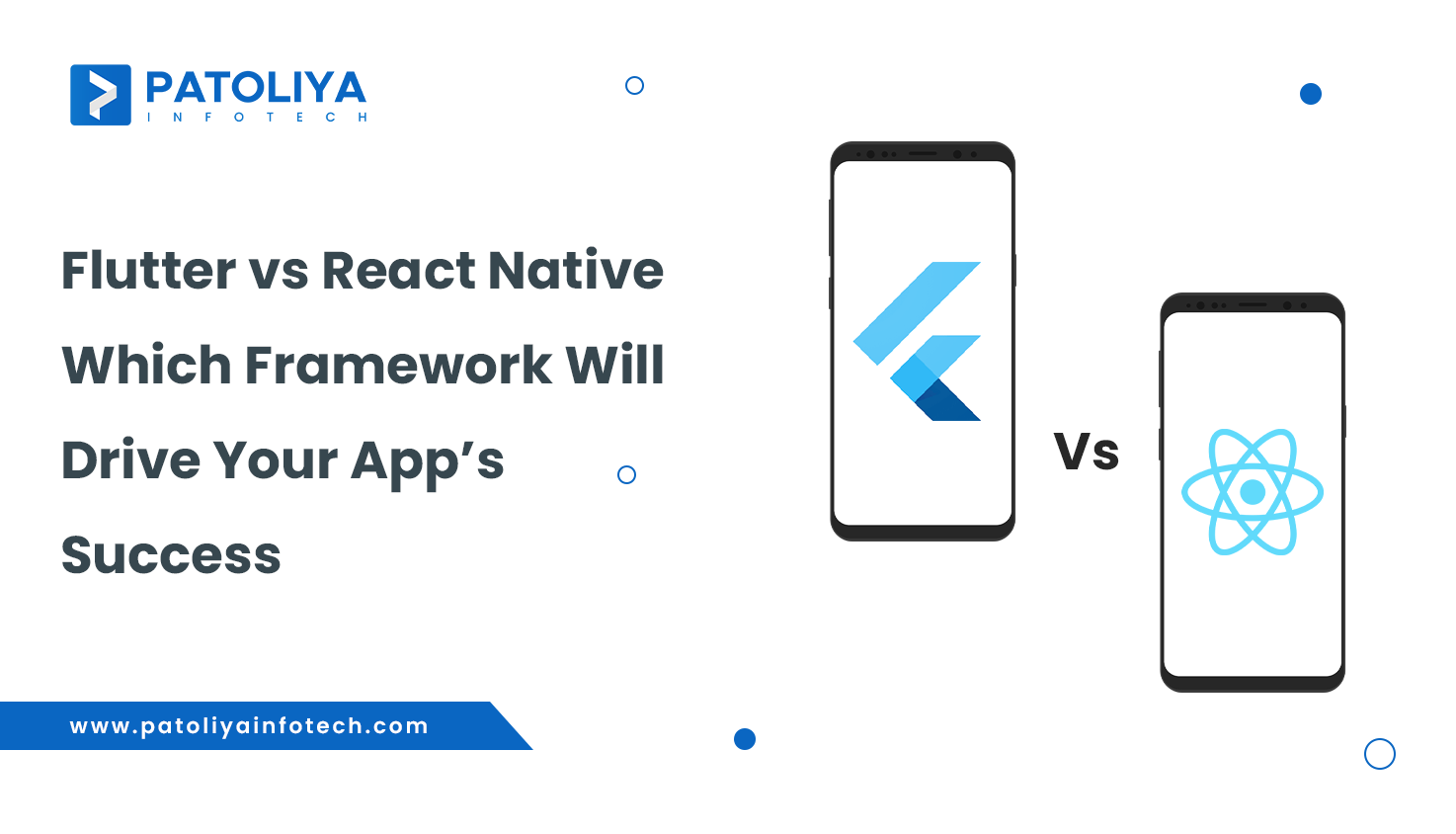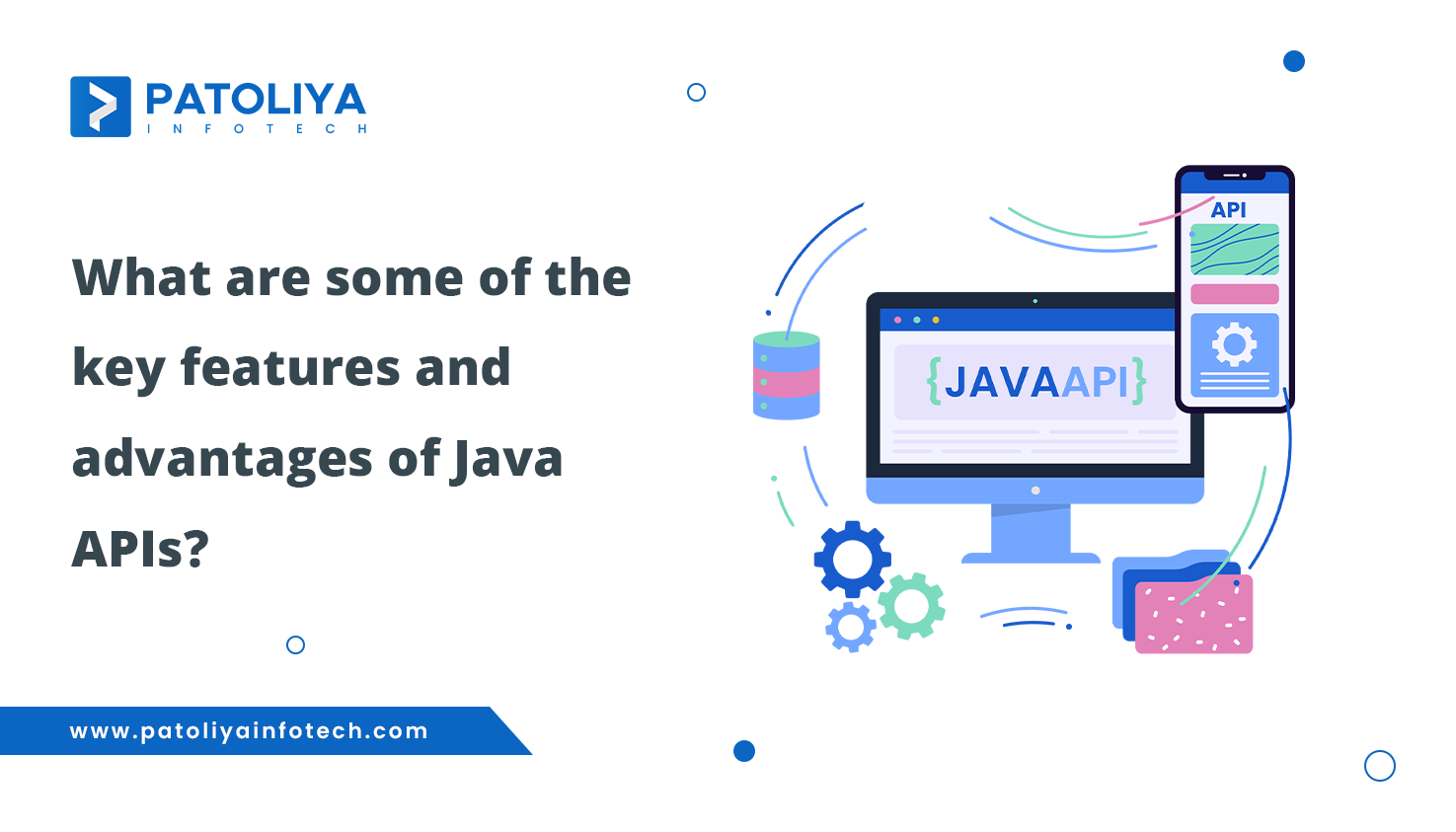A Guide to 10 Different types of Web Applications
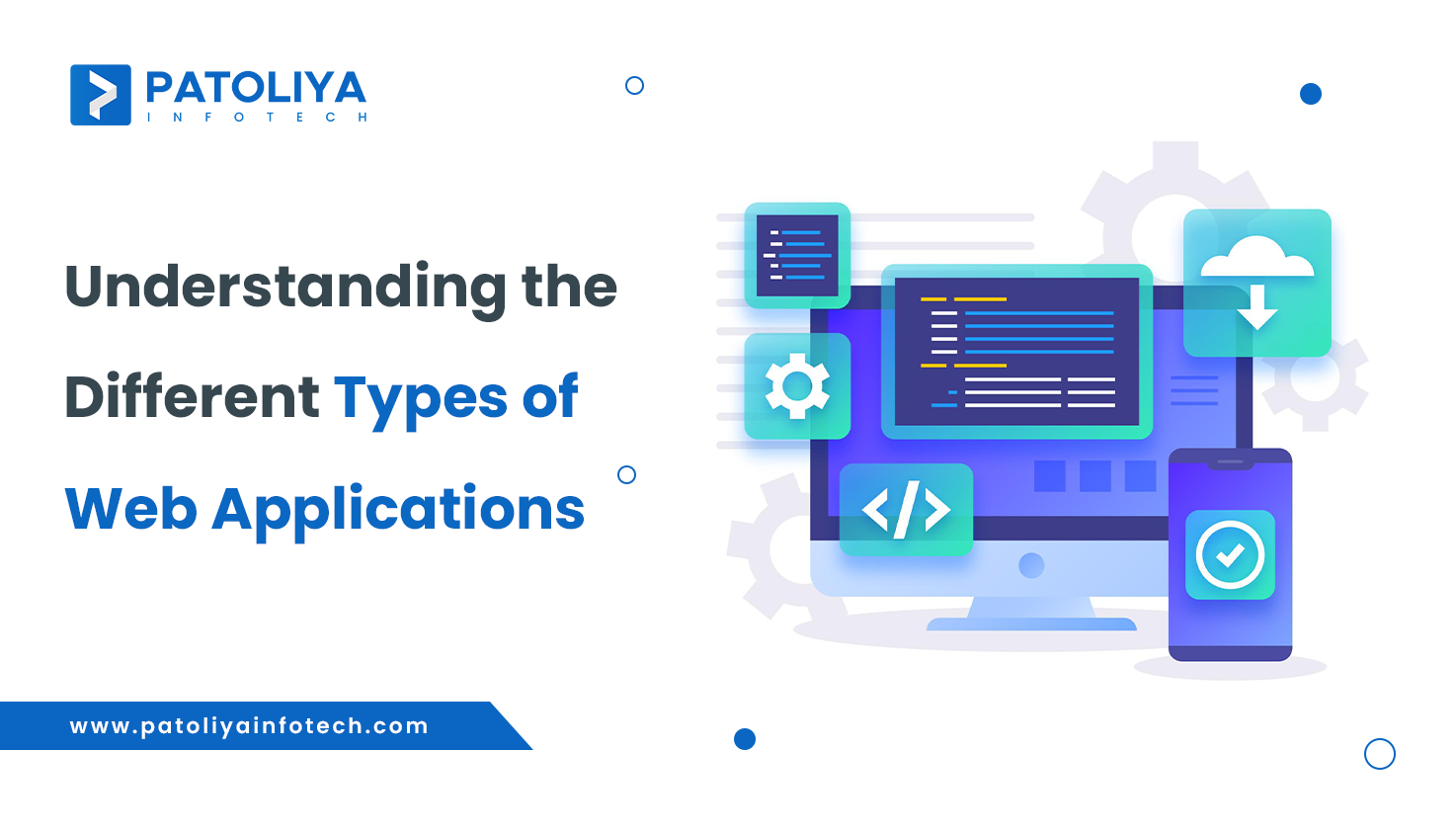
Table of Contents
The web has matured into complex network apps, many of which strive to make our online experience better in some manner. Web apps have completely changed the way we do business, engage with each other, and access information.
They started off as simple static websites displaying personal portfolios and have now expanded to dynamic realms such as e-commerce and social networking.
This in-depth guide explores the 10 types of application development, carefully analyzing their features and the supporting technologies that enable them to function.
We're going to go on an exploration of the immersive experiences provided by single-page applications and progressive web apps, as well as the ease of use of static web pages and dynamic applications.
You can also check for How to Implement Effective Application Security Testing for Your Business.
Next, we'll head for the e-commerce platforms' bustling markets, the democratizing force of content management systems, and the centralized hubs of web portals.
Without exploring the lively communities supported by social networking sites and the captivating realms of online games, our investigation will remain incomplete. In conclusion, we will look at how web-based collaboration tools foster a collaborative atmosphere.
Have you ever considered What Are the Main Advantages of Regular App Upkeep?
This blog post gives you an improved understanding of these many web applications, enabling you to use the internet as a more knowledgeable user. You will understand the features they provide as well as the complex technology that enable their smooth functioning.
There are ten various types of web applications covered:
- Static web apps: Easy-to-use static websites perfect for online portfolios or brochures.
- Dynamic web apps: These have capabilities like user accounts and data processing (e.g., social media platforms) and are more sophisticated and user-friendly.
- Single page applications (SPAs): Improve user experience by loading just one page with material that changes on the fly (like Gmail).
- Progressive web applications (PWAs): Provide features from an app, such as push notifications and offline mode, inside a web browser (Twitter Lite, for example).
- Web portals: Serve as centralized hubs that give consumers a single point of access to a variety of data and services (e.g., Yahoo).
- Content management systems (CMS): Make managing and creating content for websites easier (e.g., WordPress).
- E-commerce platforms: Online stores where products can be bought and sold (like Shopify).
- Social networking sites: Online communities that facilitate content sharing, interpersonal communication, and relationship building (e.g., Facebook).
- Web-based games: Interactive games that may be played right in a web browser (Agar.io, for example).
- Collaboration tools: Web apps that make project management and teamwork easier. (e.g., Slack).
Do you want a unique web application developed only for you? We make your vision a reality. Get in touch with us to find out more!
Understanding these web app types and their functionalities empowers informed.
1. Static Web Applications:
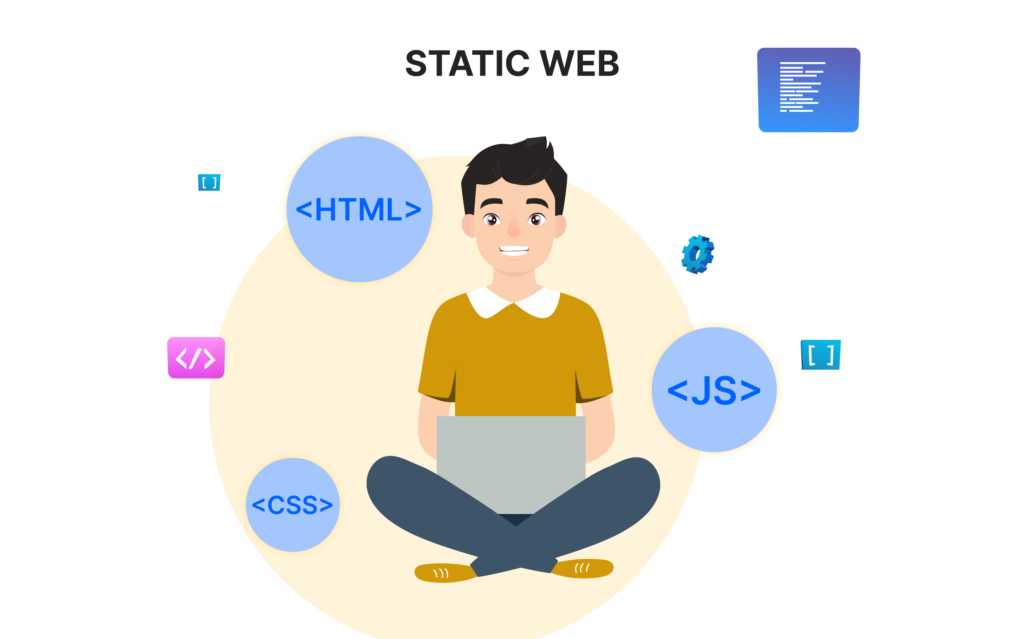
The basic web building components are represented by static web applications. They are made up of pre-made web pages whose content is set and never changes unless a developer makes manual changes.
- Technology Stack: These programmes, which are mostly composed of HTML, CSS, and JavaScript, make use of well-known programming languages for organization, display, and simple interactivity.
- Strengths:
- Ease of Development: Because they have fixed content, static applications are easier to design and maintain by nature.
- Performance: Their superior loading speed can be attributed to the lack of server-side processing overhead.
- Scalability: By spreading them across several servers, static applications can be readily scaled horizontally.
- Security: Their restricted capabilities lessen possible security flaws.
- Applications: Perfect for situations when content needs to be visually appealing, educational, and updated sometimes. perfect for :
- Brochures and landing pages
- Online portfolios
- Simple informational websites
2. Dynamic Web Applications:
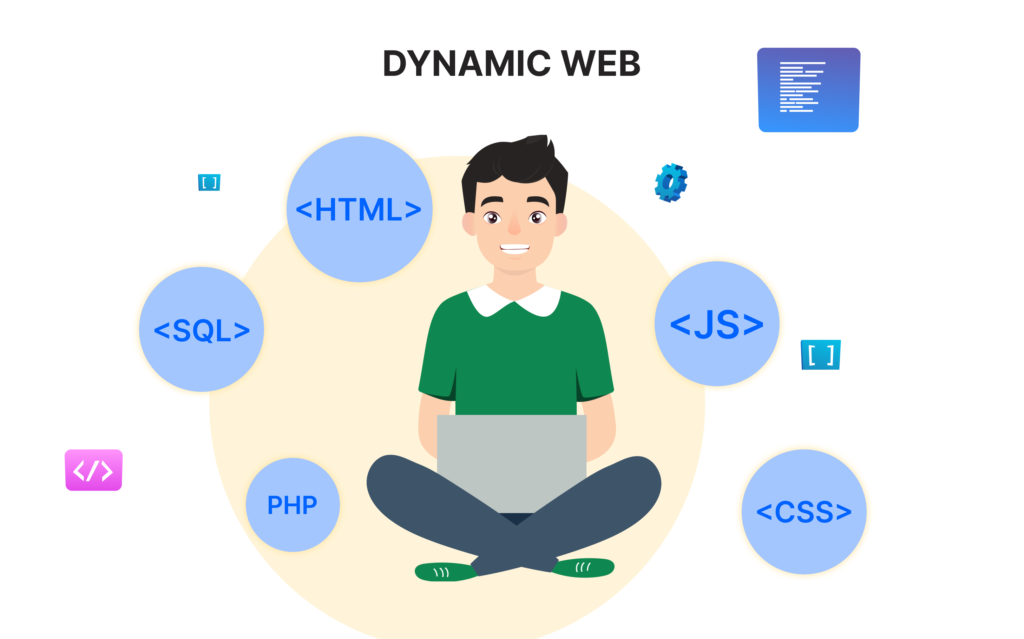
Users can have a more advanced and engaging experience with dynamic web applications. They combine JavaScript on the client side with scripting languages on the server, such as PHP, Python, or Ruby.
- Technology Stack: Combining these two functionalities enables dynamic content creation based on user input or other parameters, as well as real-time data processing and database retrieval.
- Strengths:
- Rich Functionality: Complex features like user accounts, interactive forms, and data manipulation are made possible by dynamic applications.
- Personalization: Based on user choices or previous interactions, they can customize experiences and content for specific users.
- Scalability: They can expand horizontally by dividing components across several servers, or vertically by giving a single server extra processing capacity.
- Applications: The foundation of contemporary online experiences is dynamic apps, which power:
- E-commerce platforms
- Social media websites
- Content management systems (CMS)
- Web applications with user accounts and personalized dashboards
3. Single Page Applications (SPAs):
By loading a single HTML page and dynamically modifying its content as users navigate, single-page applications (SPAs) transform web interaction. This makes it unnecessary to reload entire pages, which makes the user experience snappier and more responsive.
- Technical Underpinnings: Asynchronous JavaScript and XML (AJAX) is the method used by SPAs to retrieve data from the server without requiring a page reload. Furthermore, well-known JavaScript frameworks like Vue.js, React, and Angular simplify development and offer structure for handling intricate SPAs.
- Benefits:
- Enhanced User Experience: SPAs provide a more app-like experience, reducing disruptions and encouraging user interaction.
- Faster Navigation: Within the application, view transitions are more rapid and smooth.
- Improved Performance: If SPAs can prevent full page reloads, they may improve perceived performance.
- Example: An example of an SPA is Gmail. Once loaded, you can compose new messages, search your inbox, and move between emails, and the UI will update dynamically.
4. Progressive Web Applications (PWAs):
PWAs, which provide functionalities similar to native mobile applications, are an example of a progressive approach to web development. Although they use common web technologies (HTML, CSS, JavaScript), the experience they provide is akin to an app.
- Key Features: PWAs offer features that are usually only seen in native apps, such as:
- Offline Functionality: Because of clever caching techniques, it is possible to function even when there is no internet connection.
- Push Notifications: Provide notifications and updates in real time straight to the user's device.
- Device Hardware Access: may make use of hardware components like the camera or GPS to increase functionality beyond what is normally possible on the internet.
- Installability: PWAs allow users to install them on their home screens, obfuscating the distinction between online and app content.
- Benefits:
- Enhanced User Engagement: PWAs provide an experience that is more immersive and app-like, which may increase user interaction.
- Wider Reach: There is no need to download them from the app store because they can be viewed using web browsers.
- Reduced Development Costs: PWAs, as opposed to native apps, have the potential to simplify development by utilizing current web technology.
- Example: A perfect example of a PWA is Twitter Lite. Installing this thin-client version of Twitter on a smartphone's home screen allows it to function offline and provide push alerts without sacrificing its web-based base.
5. Web Portals:
Web portals serve as centralized hubs that give consumers one point of entry to a wide range of information and offerings. They serve certain user groups or communities and are frequently customized.
- Key Features: Functions that web gateways usually include are:
- Content Aggregation: Assembling and displaying data from several sources in a cohesive way.
- Search Functionality: providing strong search capabilities to assist users in finding pertinent stuff on the site.
- User Authentication: Allowing for individualized experiences with user profiles and safe login procedures.
- Benefits:
- Streamlined Access: A single interface allows users to access a variety of information and services.
- Personalization: Based on user responsibilities or choices, portals can customize information and content.
- Community Building: Among users who have similar interests, they can encourage communication and cooperation.
- Example: One of the most well-known web portals is Yahoo. Serving a large audience, it provides a one-stop shop for email, news, weather, sports scores, and more.
6. Content Management Systems (CMS):
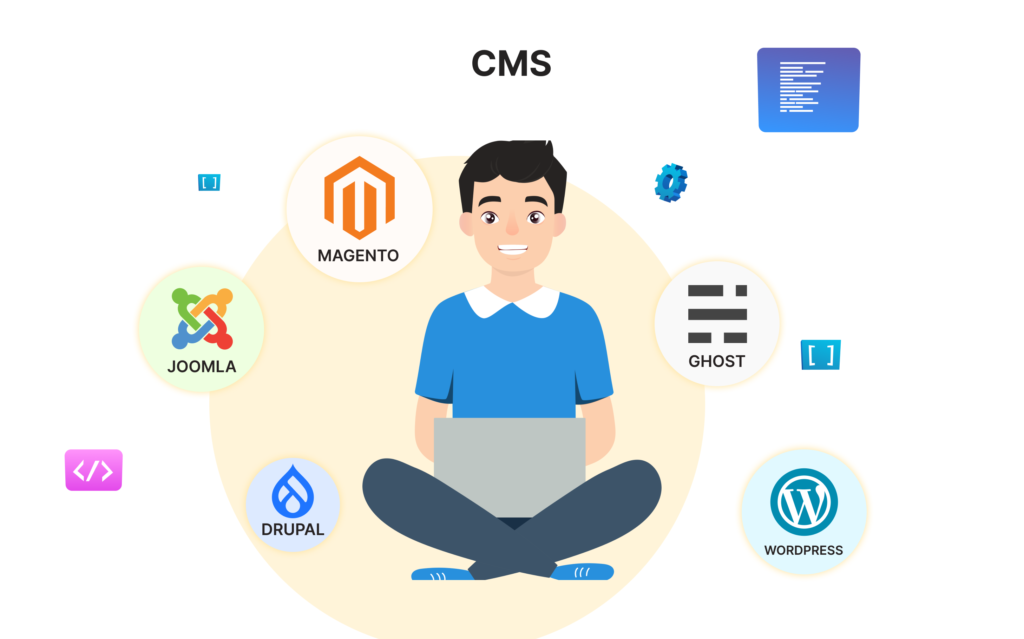
A content management system, or CMS, is a software platform created especially to make the process of creating, organizing, and publishing digital information on the web easier.
- Core Functionalities: Generally, a strong CMS provides features like:
- WYSIWYG Editors: Editing interfaces that are easy to use and don't require a lot of coding expertise for users to create content. ("What You See Is What You Get" refers to the editor's ability to show content as it will appear in print.)
- Content Scheduling: Allowing content producers to plan release windows and times for maximum effect.
- User Management: Provide resources for controlling access permissions and user roles within the CMS platform.
- Advantages:
- Simplified Content Creation: CMS makes content creation more accessible to non-technical people by doing away with the requirement for complicated code.
- Collaboration: The ability for multiple users to work on content at once streamlines workflows.
- Scalability: CMS systems are made to handle increasing website traffic and content requirements.
- Example: WordPress is an open-source content management system (CMS) that is extensively used for managing online content, blogs, and websites.
7. E-commerce Platforms:
E-commerce platforms are specialised online stores created to make online purchases and sales of goods and services easier. They serve as online marketplaces that link companies and customers.
- Key Functionalities: E-commerce platforms often provide the following features:
- Product Catalogs: Enabling companies to display their goods with thorough descriptions, pictures, and costs.
- Shopping Carts: Letting clients choose and control the products they want to buy.
- Secure Payment Gateways: Supplying clients with a secure and reliable environment in which they may finish online purchases with credit cards or other payment options.
- Customer Relationship Management (CRM) Tools: Supporting companies in tracking past purchases and managing consumer contacts.
- Benefits:
- Convenience: Customers may purchase easily and conveniently from the comfort of their homes with the help of e-commerce platforms.
- Wider Selection: They may offer a greater selection of goods and vendors than brick-and-mortar establishments.
- Competitive Prices: E-commerce encourages seller rivalry, which could result in more affordable prices for buyers.
- Example: One of the best e-commerce platforms is Shopify. It gives companies of all sizes the ability to design and run their own online stores by providing resources for safe payment processing, inventory control, and product listings.
8. Social Networking Sites:
Websites that link people and allow them to exchange content, form connections, and take part in online groups based on common interests are known as social networking sites.
- Core Functionalities: Platforms for social networking usually have features like:
- User Profiles: Supplying an area where individuals can display their hobbies and characteristics.
- Friend Connections: Assisting in the establishment of connections between people who are real-life friends or have similar interests.
- News Feeds: Supplying friends and entities you follow with individualized updates on their activities and material.
- Messaging: Enabling user-to-user private conversation.
- Advantages:
- Connection and Community: Social networking services help people connect with friends, relatives, and people who share their interests, which creates a feeling of community and belonging.
- Content Sharing: They give people a place to exchange concepts, stories, and artistic works.
- Global Reach: Social networking links people worldwide by overcoming geographic barriers.
- Example: The most popular social networking site in the world is Facebook. It has billions of users who interact, exchange material, and participate in virtual communities centred around a wide range of interests.
9. Web-based Games: Accessible Entertainment for All
Interactive programmes that can be played straight in a computer browser are known as web-based games. They provide rapid access to a huge library of games, doing away with the requirement for specialised gaming consoles or installs.
- Technological Underpinnings: WebGL, JavaScript, and HTML5, among other advances in web technologies, are used in modern web games. With the use of these technologies, game creators may produce graphics-rich, intricate gameplay experiences with fluid gameplay.
- Benefits:
- Accessibility: Playing games from any device with a web browser is easy and handy with web-based games.
- Variety: Web-based games are available in a variety of genres, including strategy, role-playing, and casual puzzle games, and they appeal to a broad audience.
- Social Interaction: Some online games encourage social interaction by letting users team up or compete against other players virtually.
- Example: A common example of an online game is Agar.io. In a competitive setting, players take possession of a cell and must avoid being consumed in order to grow larger by consuming lesser cells.
10. Collaboration Tools: Empowering Teams to Achieve More
Web apps called collaboration tools are made to make project management and teamwork easier. They make it easier for geographically separated teams to coordinate tasks, share information, and communicate in real time.
- Core Functionalities: Typical collaboration tools include the following features:
- Document Sharing: facilitating real-time team collaboration and sharing on documents, spreadsheets, and presentations.
- Task Management: supplying resources for job assignment, deadline setting, and progress monitoring.
- Video Conferencing: enabling remote meetings and in-person conversations from any location.
- Instant Messaging: Facilitating instantaneous communication and prompt updates among groups.
- Advantages:
- Enhanced Communication: Collaboration technologies facilitate efficient communication between team members and promote productive knowledge sharing.
- Improved Productivity: They provide teams the tools they need to collaborate more effectively, handle duties more skillfully, and accomplish goals as a team.
- Geographic Independence: Teams that are geographically separated can collaborate easily despite physical obstacles thanks to collaboration tools.
- Example: One well-known example of a tool for collaboration is Slack. In order to promote effective teamwork, it provides a central platform for groups to interact, share files, assign tasks, and have video conferences.
Wrap Up
You can create anything using web applications, from an eye-catching e-commerce site to a challenging puzzle game. The options are only limited by your creativity.
Your road map to achievement is an understanding of the many kinds of web applications. The correct tools and technology are your rocket fuel, regardless of whether you're creating a large-scale multiplayer experience or a sleek one-page brochure.
Put on your seat belt and get ready for takeoff! Using web development to its full potential, you can produce engaging user experiences that will take your company to new heights. The web's future is waiting for you to write the code.

